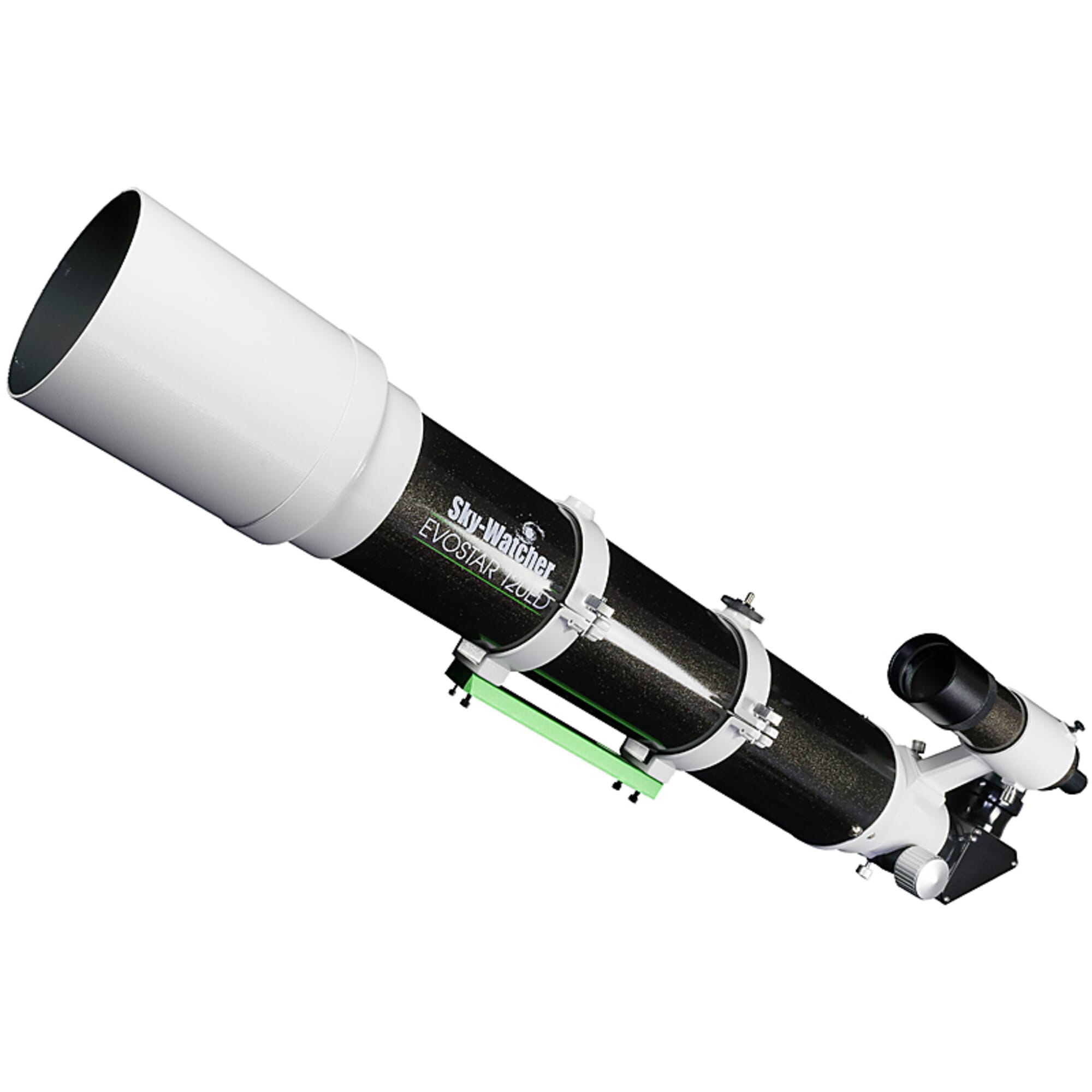A refractor telescope is a telescope that uses lenses to gather light and form an image of objects in the sky. It is the classic type of telescope as most people imagine it: a long, straight tube with a lens at the front and an eyepiece at the back. In this blog, we explain how this system works, what you can see with it, and why it is a logical first choice for many beginners.
How does a refractor telescope work?
Unlike a reflector telescope, a refractor does not use mirrors but lenses. The system consists of:
- Objective lens (front lens) - This large lens at the front of the telescope captures light and bends it to a single focal point.
- Eyepiece (viewing lens) - At the back of the telescope is the eyepiece, which magnifies the bundled light so you can view it.
The word “refractor” comes from the English “to refract,” meaning to bend. So light is bent (or refracted) by lenses, not reflected by mirrors.
What are the advantages of a refractor telescope?
Refractors have some distinct advantages, especially for beginners:
✓ Easy to use - straightforward design, no need to align mirrors
✓ Closed system - the tube is dense, so less chance of dust, moisture or contamination
✓ Sharp image on planets and the moon - especially at high focal lengths (f/10 and above)
✓ No collimation required - you don't have to adjust optics like with reflectors
Refractors are also great for terrestrial observation (landscapes, birds) because the image is upright if you use a proper prism.
What are the disadvantages of a refractor telescope?
✗ Chromatic aberration - cheaper models suffer from color errors (blue/purple rim around bright objects)
✗ More expensive production - lenses are more difficult and costly to make than mirrors
✗ Limited opening for your budget - For the same money you buy a much larger mirror with a reflector
✗ Longer tube at the same focal length - an f/10 refractor is considerably longer than an f/5 reflector
For the sharpest image with minimal color errors, it is best to choose an apochromatic refractor, but they are considerably more expensive.
What can you see with a refractor telescope?
Refractors are particularly good at it:
✓ Observing the moon with great detail
✓ Viewing the rings of Saturn and the moons of Jupiter
✓ Bright star clusters such as the Pleiades
✓ Double stars and planets at higher magnification
Deep-sky objects are also visible, but less spectacular than with larger aperture reflectors. A refractor is more of a precision instrument than a light sample.
What is the difference between achromatic and apochromatic?
A achromatic refractor is the classic basic model that uses two lens elements. These are affordable but may have visible color defects.
A apochromatic refractor (also called APO) uses three or more lens elements made of special glass. As a result, color aberrations are almost completely corrected, and the image is extremely sharp - especially in astrophotography.
✓ Achromatic = good for visual use in beginners
✓ Apochromatic = ideal for advanced photographers and photographers
Which refractor telescope is right for you?
If you are just starting out and mainly want to view the moon and planets, an achromatic refractor with an aperture of 70-90 mm and a focal length of f/10 is ideal. Consider models such as the:
- Celestron StarSense Explorer LT 80AZ - easy to use with help of smartphone
- Bresser Classic 90/900 - classic lens telescope with tripod
Those who want to get more out of their observing or photographing experience should look more closely at:
- Sky-Watcher Evostar 80ED - an ED refractor with lots of observational quality
- ZWO FF65 APO - a high-end quad-lens telescope specifically for photography
Why do people choose a refractor?
- ✓ No mirror alignment or maintenance required
- ✓ Suitable for visual as well as terrestrial observations
- ✓ Classic appearance and robust construction
- ✓ Ideal for planets, moon, double stars and high-contrast objects
For beginners who just want to look without a lot of settings or technique, the refractor is often the most approachable choice.
What is the difference between a refractor and a reflector telescope?
| Feature | Refractor | Reflector |
|---|---|---|
| Light collection | Through lenses | Via mirrors |
| Maintenance | No collimation required ✓ | Regular collimation ✗ |
| Image quality | Very sharp on planets ✓ | More suitable for deep-sky |
| Weight/Length | Tall and slender ✗ | Short and wide |
| Price/opening | More expensive per mm ✗ | Cheaper per mm ✓ |
Want to know which one suits you better? Then also read our blog What is a reflector telescope?
Conclusion: is a refractor telescope for you?
A refractor telescope is perfect for those looking for simplicity, sharp images and a maintenance-free system. Especially for moon and planet lovers, this type is an excellent first step.
✔ Ideal for beginners who just want to watch without hassle
✔ Suitable for both observation and landscape
✔ Want more? Then consider an apochromatic refractor for photography
→ Want to know more? View the assortment refractor telescopes on Telescoop.co.uk or use the telescope selection guide To find your ideal viewer.







